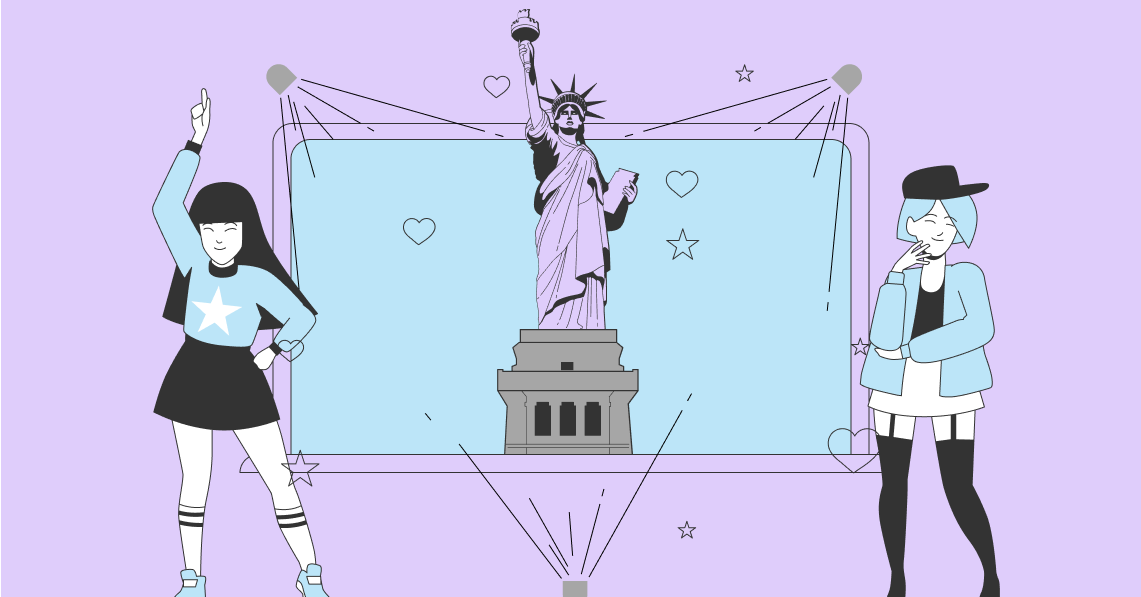I’ll be honest, I didn’t really get Pinterest when I first heard about it. What was the point? A way to organise links to websites about stuff that I’m interested in? Isn’t that called a bookmark? Oh, there’s a social function? Why?
I do take comfort in the fact that Pinterest didn’t really understand itself at first, either. I man, they had an idea of some kind, and knew that social media was hot, but what they’re selling today is a much different service than what they were saying back in 2010. Here’s Ben Silbermann, Pinterest’s CEO and co-founder, describing it to investors back in March of 2010:
People join Pinterest to create these collections through pinboards, and to follow collections created by their friends.
Not that this isn’t still true, but it doesn’t really spell out a clear path to profitability—other than the knowledge that advertisers will come if the users are there. A lot has happened to advertising and shopping on social media in the time since that email was sent, and it’s forced Pinterest to reassess where their value lies. Without really changing much to the service itself, it’s now referred to as a “visual discovery tool” and they bristle at any mention of it being a social media platform. Look at how Amy Vener, Pinterest’s Retail Vertical Strategy Lead, describes the service today:
Quick Jump - Summary:
Pinterest Puts the “Consume” in “Consumer”
Vener’s new description of the service isn’t just meaningless marketing fluff built around a rebrand: the numbers back up what she’s saying. According to a survey of Pinterest users and their data:
- 60% say they get their ideas for what to buy from Pinterest
- 72% say Pinterest influences them to shop when they weren’t even looking for something to buy
- 90% say Pinterest helps them decide what to purchase
- Pinterest drives more referral traffic to e-commerce sites than Facebook (33% more), Snapchat (71%), and Twitter (200%)
Notice that Instagram isn’t mentioned in that last bullet point, which is still the best social platform for businesses to convert audiences into customers. In any case, if businesses, like me, hadn’t really understood the potential of the platform before, those statistics are enough to drive the point home. And if it’s true that pinners are there looking to connect with brands, then that flips the script on traditional social media marketing. On Instagram, brands are looking for new customers. On Pinterest, customers are looking for new brands.
Here are four ways that Pinterest is trying to facilitate those connections, and boost sales for brands.
New Profiles Just For Businesses
Now that the messaging around Pinterest concerns connecting people with businesses, it makes sense that the company would add a new feature to make the platform more business friendly.
It’s a small thing, but worth mentioning. Essentially, what they’ve done is given businesses a more robust profile than the average user gets. The profile cover is dynamic, and can be used to show the content businesses want people to see: their latest pins, specific boards, or recent activity. The profile also gives quick access for users to see who or what you’re following, a nice way to show you’re participating and engaging, and not just there to sell your wares. Finally, the top of the page displays a monthly visitors statistic, showing the number of people who’ve viewed your pins in the last 30 days (including views from boards that aren’t yours, if someone else has pinned them there). It’s a great way to see how much of an audience you’re reaching. For example, IKEA UK’s business profile shows they 73k followers, but just shy of 3 million viewers. You can’t judge performance based solely on followers, as this statistic clearly shows.
Don’t Call Them Pinfluencers
In 2016, when the world collectively decided that influencer marketing was the new normal for social media marketing, Pinterest announced the creation of their Pin Collective. The idea here wasn’t for Pinterest to act as some kind of broker for sponsored posts. Instead the Pin Collective comprises the best “pinners” the platform has to offer. They’re the ones with thousands to millions of followers, who consistently create great content that other users engage with. You know: influencers. Their role within the collective, however, is as a creator.
In order to access these creators, businesses have to commit to a minimum media spend (basically: promoted pins and other content). They can then work with these creators to create content specifically for the brand account’s boards. The details of the work, including any payment, are worked out between them—Pinterest doesn’t get involved or take a cut here. Presumably, so long as the minimum spend is met, there’s nothing stopping these brands from also sponsoring pins or boards on the creators’ feeds, as well.
This is a great way to drive traffic to their Pinterest boards, and when other people start pinning these posts, the traffic just increases. Remember, these are people looking for things to buy, even when they hadn’t intended to buy anything.
Pinterest, Now Under the Influence
For smaller businesses and brands that don’t meet Pinterest’s ad spend criteria—and therefore can’t access the Pin Collective—the company just announced some news especially for you. They’ve officially opened up their API for influencer marketing platforms. Right now, they’ve already got eight partners signed on: AspireIQ (formerly Revfluence), HYPR, Influence.co, IZEA, Klear, Mavrck, Obvious.ly, and Open Influence. For anyone using one of these platforms, the big news here is that you can expand your influencer campaigns onto Pinterest and get access to the full complement of data and insights that was only available to the Collectivists. You’ll be able to pull in these metrics from your own account, too, centralising your reporting.
If your platform isn’t listed here, you can probably give them a nudge to get on board.
Shopping Ads For the Win
Earlier this year, Pinterest moved this feature out of testing phase and made it available to hundreds of businesses on the platform. In keeping with the newfound focus on visual discovery, the shopping ad is meant to replicate the experience of shopping in a store. If you go to a furniture shop looking for a sofa, you’ll quickly scan all your options, moving in for a closer look when something catches your eye. This has as much to do with the way the sofa looks as it does with the display it’s been set up in. Shopping ads give you the same ability to create an appealing “display,” much like you’d find in a store, mixing detailed images of the product with more lifestyle-oriented photos, showing the sofa “in action.”
These images are automatically pulled in from a brand’s product feed and presented to PInterest users as a promoted pin in their search results. The visual appeal of these ads has been shown to be very effective on the Pinterest population (which, it bears repeating—AGAIN—is made up of people who are there with intent to buy things). One early adopter of shopping ads, the home improvement store Lowe’s, saw just how effective these ads can be. Compared to their previous Pinterest advertising attempts, they saw a 20% increase in their click-through rate, and 43% reduction in cost-per-click. Even better, the return on ad spend outperformed their own goal by 76%.
Conclusion
Pinterest is unique among all the popular social platforms. For one, they no longer consider themselves a social platform. The central theme of consumer inspiration is still there, but users are no longer the primary audience. Pinterest has doubled down on their knowledge that people come there looking to buy things but shifting their developmental focus on to attracting and keeping businesses. Where Instagram relies on users to create content and community, attracting businesses to the platform, Pinterest is looking at things from a reverse perspective. They’re trying to make it easier for businesses to develop better content and to get noticed, knowing that the more brands they have to inspire people, the more people will join Pinterest. These latest moves are designed to make it a beneficial platform for more than just the big companies that can afford to advertise with promoted content. Now, smaller companies that have seen the positive effects of influencer marketing can leverage the platform, as well, without huge spending commitments. If you thought the scramble toward influencer marketing was starting to slow down, it looks like you thought wrong. Things are just starting to get pinteresting.


